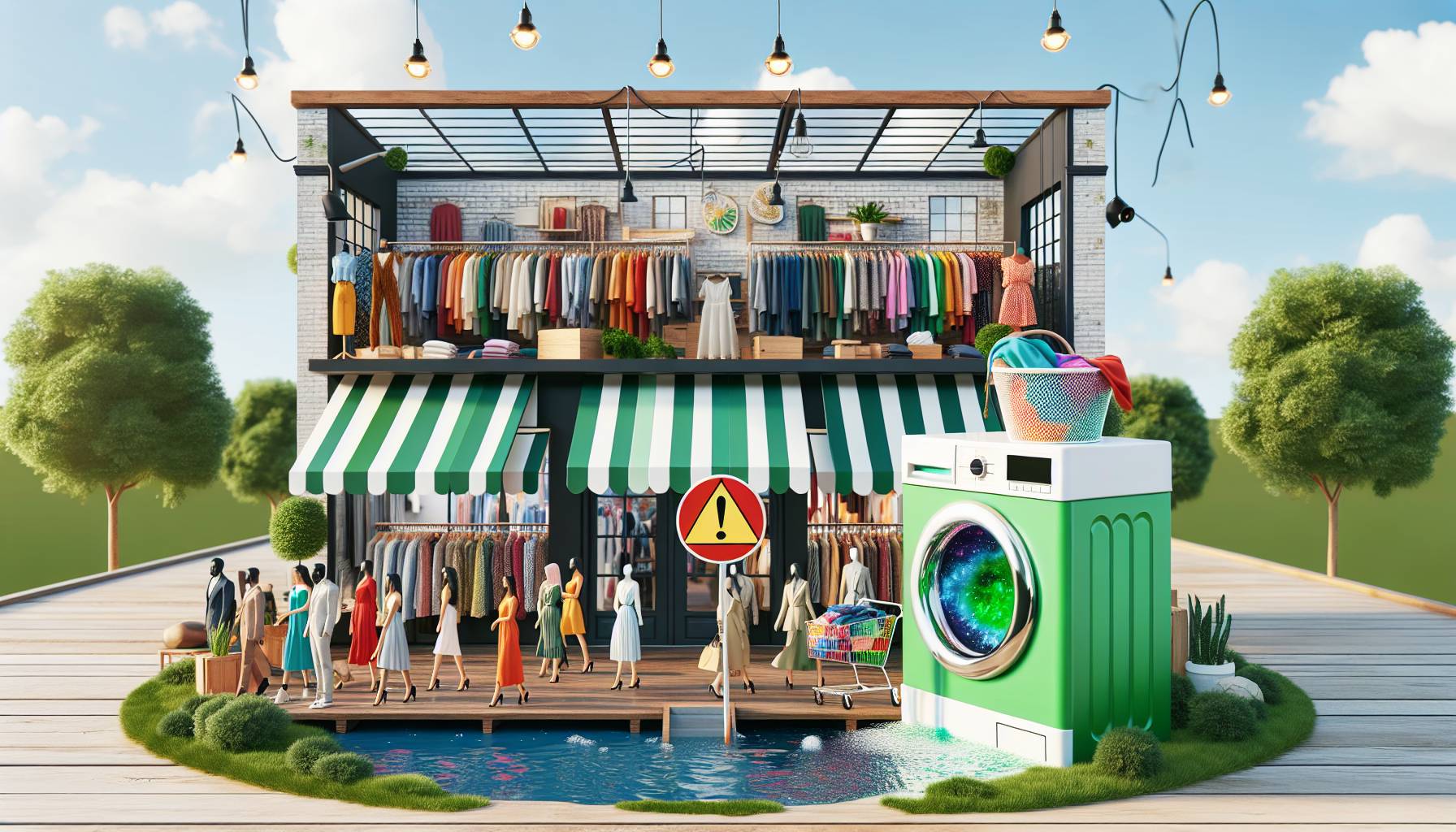Exploring the $50 clothing haul
In a recent TikTok video, a content creator set out to demonstrate just how much clothing can be purchased with a budget of $50. The video, which quickly gained traction, showcased a variety of garments acquired from a local thrift store. The TikToker meticulously selected each piece, highlighting the affordability and accessibility of second-hand shopping.
The haul included a diverse range of items, from casual wear to more formal attire, illustrating the vast options available even with a limited budget. Each piece was carefully chosen not only for its style but also for its quality, proving that second-hand does not necessarily mean second-rate.
Viewers were particularly impressed by the number of items the TikToker was able to purchase, which included several tops, a couple of pairs of jeans, and even a jacket. This impressive collection underscored the potential for significant savings when opting for pre-loved clothing over brand-new items.
Throughout the video, the TikToker emphasized the importance of being mindful of spending and the benefits of thrift shopping. By choosing second-hand, consumers can enjoy a wide variety of styles without breaking the bank, all while contributing to a more sustainable fashion industry.
The environmental impact of textile waste
Textile waste is a growing concern globally, with Australia being no exception. Each year, Australians dispose of an estimated 23 kilograms of clothing per person, contributing to the staggering amount of textile waste that ends up in landfills. This waste not only occupies valuable space but also poses significant environmental challenges.
When textiles are discarded, they often decompose slowly, releasing harmful greenhouse gases such as methane into the atmosphere. Additionally, synthetic fibers, which are prevalent in many modern garments, do not biodegrade and can persist in the environment for hundreds of years. This contributes to soil and water pollution, as microplastics from these fibers can leach into ecosystems, affecting wildlife and potentially entering the food chain.
The production of new clothing also has a substantial environmental footprint. The fashion industry is one of the largest consumers of water, with vast quantities required for growing cotton and dyeing fabrics. Moreover, the chemical processes involved in textile production can lead to water pollution, affecting both human and environmental health.
Addressing textile waste requires a multifaceted approach, including reducing consumption, increasing recycling efforts, and promoting sustainable fashion practices. By understanding the environmental impact of our clothing choices, individuals can make more informed decisions that contribute to a healthier planet.
Sustainable fashion alternatives
As awareness of the environmental impact of textile waste grows, many Australians are turning to sustainable fashion alternatives to reduce their ecological footprint. One popular option is purchasing clothing made from organic or recycled materials. These garments often use less water and fewer chemicals in their production, making them a more environmentally friendly choice.
Another approach is to support brands that prioritize ethical manufacturing practices. These companies often ensure fair wages and safe working conditions for their workers, while also implementing environmentally conscious production methods. By choosing to buy from these brands, consumers can help drive demand for more responsible fashion industry practices.
Upcycling is also gaining traction as a creative and sustainable fashion solution. This involves transforming old or discarded clothing into new, unique pieces. Many designers and DIY enthusiasts are embracing upcycling as a way to reduce waste and create one-of-a-kind garments that reflect personal style.
Clothing rental services offer another sustainable alternative, allowing individuals to enjoy a rotating wardrobe without the need for constant purchasing. This model not only reduces the demand for new clothing but also encourages a culture of sharing and reusing, which can significantly decrease textile waste.
Finally, adopting a minimalist wardrobe or capsule wardrobe can be an effective strategy for reducing clothing consumption. By focusing on quality over quantity and selecting versatile pieces that can be mixed and matched, individuals can maintain a stylish and functional wardrobe with fewer items.
These sustainable fashion alternatives not only help mitigate the environmental impact of textile waste but also encourage a more thoughtful and intentional approach to clothing consumption. By embracing these practices, Australians can contribute to a more sustainable future while still enjoying the benefits of fashion.
exploring the impact of fast fashion on textile waste
Fast fashion has become a dominant force in the global apparel industry, offering consumers the latest trends at remarkably low prices. However, this convenience comes with a significant environmental cost. The rapid production cycles and disposable nature of fast fashion contribute heavily to textile waste, a growing concern in Australia and worldwide.
Each year, Australians dispose of approximately 23 kilograms of clothing per person, much of which ends up in landfills. The fast fashion model encourages frequent purchases, leading to a cycle of overconsumption and waste. Garments are often worn only a few times before being discarded, as new styles quickly replace them.
Textile waste is not just an environmental issue but also a resource management problem. The production of clothing involves substantial water usage, energy consumption, and chemical processes. When these garments are discarded, the resources used in their creation are effectively wasted.
Moreover, the synthetic fibers commonly used in fast fashion, such as polyester, do not biodegrade, persisting in the environment for hundreds of years. This exacerbates the problem, as these materials contribute to the growing volume of non-biodegradable waste.
“The allure of fast fashion is undeniable, but it’s crucial to consider the long-term impact of our purchasing decisions,” says a leading Australian fashion sustainability advocate.
As awareness of these issues grows, there is a push within the fashion industry and among consumers to seek more sustainable practices. This includes supporting brands that prioritize ethical production, using recycled materials, and encouraging a shift towards a more circular fashion economy.
maximizing wardrobe value with budget-friendly shopping
In the quest to maximize wardrobe value while being mindful of budget constraints, savvy shoppers are turning to strategies that not only save money but also promote sustainability. One effective approach is to focus on quality over quantity. Investing in timeless, well-made pieces can provide a solid foundation for any wardrobe, reducing the need for frequent replacements.
Another strategy is to embrace the art of thrifting. Second-hand stores and online marketplaces offer a treasure trove of unique finds at a fraction of the cost of new items. This not only extends the life of garments but also reduces demand for new production, aligning with sustainable fashion goals.
Capsule wardrobes are also gaining popularity among fashion-conscious Australians. By curating a collection of versatile pieces that can be mixed and matched, individuals can create numerous outfits without the need for excessive clothing. This approach encourages thoughtful purchasing and helps avoid impulse buys that often lead to waste.
Additionally, participating in clothing swaps with friends or community groups can refresh a wardrobe without spending a cent. This practice fosters a sense of community and encourages the sharing of resources, further reducing textile waste.
For those who enjoy a bit of DIY, upcycling old garments into new creations can be both a creative outlet and a way to breathe new life into tired pieces. Simple alterations or embellishments can transform an outdated item into a fashion-forward statement.
Ultimately, maximizing wardrobe value on a budget requires a shift in mindset. By prioritizing sustainability and creativity, fashion enthusiasts can enjoy a stylish wardrobe that reflects their personal taste while contributing to a more sustainable future.

